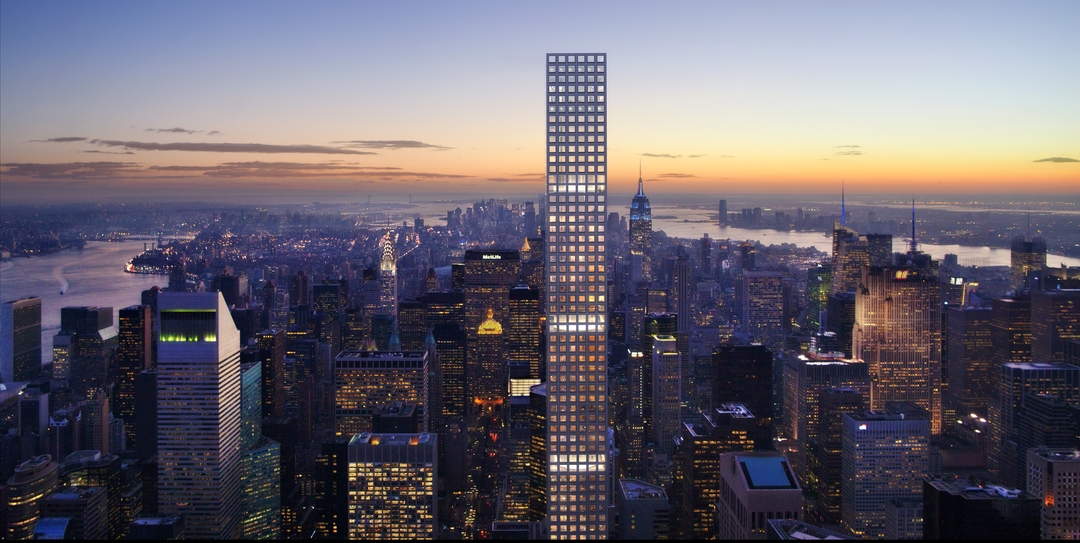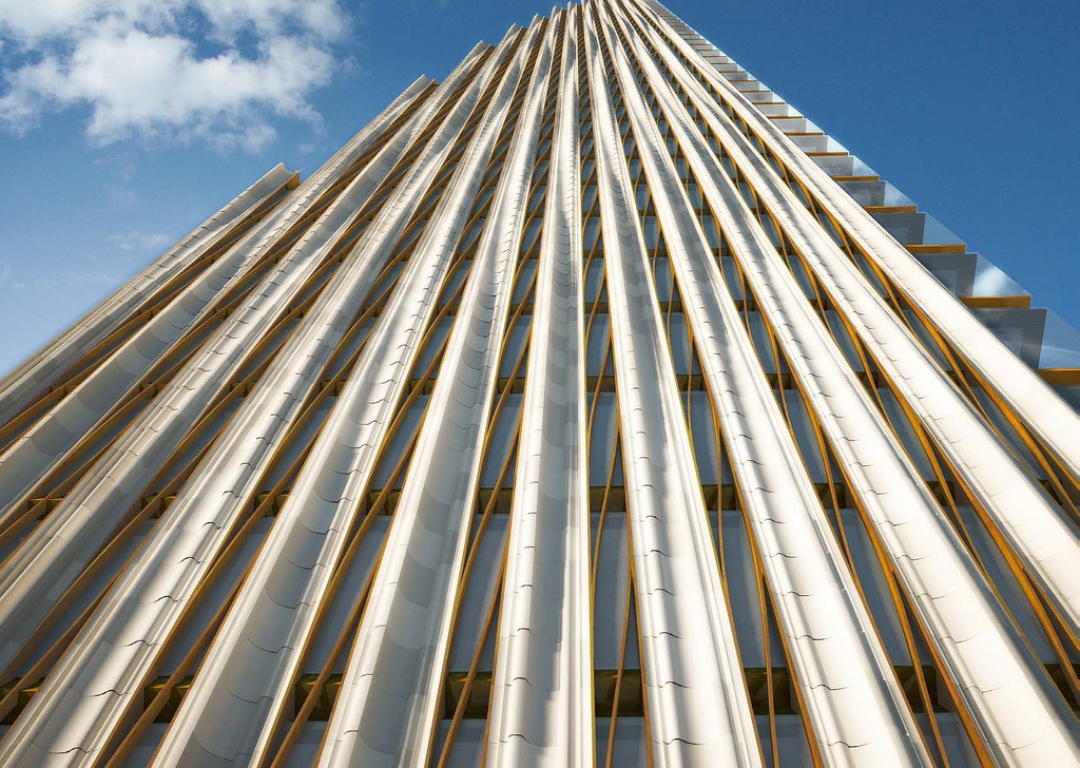Submitted by WA Contents
Opinion:The $100 Million View: SHoP’s Skinny Skyscraper Formalizes The Rich-Poor Divide
United Kingdom Architecture News - Oct 27, 2013 - 18:48 6786 views
When questioned over Census figures that showed a rapidly growing disparity between the fortunes of New York City’s haves and have-nots, outgoing Mayor Michael Bloomberg was robust in his response: “If we could get every billionaire around the world to move here, it would be a godsend.”
Bloomberg will no doubt be delighted, then, that a glittering new high-rise slated for construction in midtown Manhattan will provide those incoming billionaires with a place to live. The Landmarks Preservation Commission has recently given permission to SHoP Architects to build its design for a 1,350-foot residential tower at 107 West 57th Street in Manhattan.

The building is most notable for its width, or lack of it—the site is just shy of 45 feet (about 13 meters) across, giving it a width-to-height ratio of approximately 1:30, which could well make it the skinniest residential tower in the world.
This marks a growing trend for skinny ‘scrapers in Manhattan, with Rafael Viñoly’s slender offering on 432 Park Avenue already under construction. That sliver of real estate gold—another luxury apartment building, naturally—will rise to a staggering 1,398 feet come 2015. Just down the road, there is the equally high-end, high-priced One57 by Christian de Portzamparc.


Rafael Viñoly’s 432 Park Avenue (top) and Christian de Portzamparc's One57 are other recent examples of the super-skinny-tower trend sweeping Manhattan
These three high-rises not only share a common typology–that of the urban palace–but are also driven by similarly single-minded design briefs, with developers looking to invest in the one key asset lying outside the building’s shimmering walls—that being the view. In this respect, SHoP’s skyscraper is extraordinarily positioned, aligning almost perfectly with the axis of Central Park to the north and the Empire State Building to the south.
Couple this with the fact that every apartment in the upper reaches will take up an entire floor, with full-height glazing to both north and south elevations; the resulting panoramas will be nothing short of jaw-dropping, which has led some to predict that 107 West 57th will be home to New York’s first $100 million apartment.

107 West 57th's proposed lobby
Architecturally speaking, SHoP must be given credit. They have preserved the prized interior of the neighboring Steinway Hall (part of an agreement that enabled developers to snaffle the air rights above it) setting back the main structure from the street and creating a satisfying contrast between its light, glazed lobby and the solidity of the existing historic buildings on either side. Further more, the east and west elevations will be clad with bronze and terra cotta—SHoP partner Vishaan Chakrabarti says this will create an effect that ”sparkles during the day, and has a soft glow at night.”
So the building may have a certain elegance from the exterior, which is fortunate given that the vast majority of New Yorkers will only ever see it from the outside. With potentially just 100 investors having access to its exclusive upper floors, this layer-cake of luxury will be viewed by most as a sparkling monument to New York’s ever-widening financial chasm.

The facade of SHoP's proposed skyscraper
Will the future inhabitants of these air-born mansion houses fuel businesses, create jobs, pay their fair share of taxes, and employ staff on wages that enable them to survive in the vicinity of this extraordinarily expensive city? For Bloomberg’s stance to be vindicated, it is critical that they do: Otherwise, these skyscrapers may only serve to exacerbate a new and potentially dangerous class divide. Fritz Lang’sMetropolis springs to mind, and I imagine most would agree that that dystopian scenario is best left as a work of social, cultural and architectural fiction…
Agree? Disagree? State your case here.
by The Angry Architect
> via Arhitizer